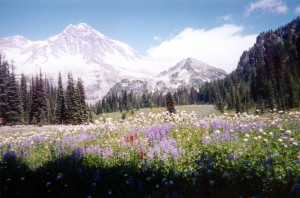 Your taxes are due. Pay them, because you must. Then ask yourself if you’re getting your money’s worth. It won’t matter. Even if you don’t like the hand you’ve been dealt here, you still have to pay. And pay. If you’re paying, it’s because you’re making money. In this economy, that’s a good problem. You can still complain but, you know, keep the context in mind.
Your taxes are due. Pay them, because you must. Then ask yourself if you’re getting your money’s worth. It won’t matter. Even if you don’t like the hand you’ve been dealt here, you still have to pay. And pay. If you’re paying, it’s because you’re making money. In this economy, that’s a good problem. You can still complain but, you know, keep the context in mind.
Back to the value. Do you like roads and national defense? Firemen and building inspectors? The teacher who makes sure that the next generation, the one that will pay for your Medicare, knows how to do something of economic value? Of course you do. We might think they get paid too much or that some services and investments are stupid, but we’re complaining about degrees here.
Here’s a place where we’re pretty comfortable with the investment of our collective money: the National Parks Service. Even if the parks were a money-losing investment, you could argue that they are worth funding. We pay for pretty and enjoyable things all the time—for movies and music and living room paint—and parks are some of the most beautiful and enjoyable things we have. And the beauty is particularly durable. Let’s say eternal. The breathtaking drama of a movie usually fades after a couple of years. Ditto the paint. The Grand Canyon, not so much. Pretty much as beautiful now as it was when Columbus landed.
They are also attractive, in the sense that they draw people to them, so powerfully that people will spend lots of money going to parks, and staying in them and in nearby communities. They are, in fact, not money-losers. They are money-generating operations for our communities. For an economy that needs every penny of stimulus it can get, this seems important.
A 2006 study conducted for the National Parks Conservation Association found that every dollar invested in the National Parks System generates at least four dollars in direct economic impact to the economy. Repeat: that’s a 4-to-1 ROI. The investment supports $13 billion of local private-sector economic activity. The Department of the Interior claims that number has grown substantially over recent years: “Visitors to the National Park System contributed more than $31 billion to local economies and supported 258,000 jobs in 2010, an increase of $689 million and 11,500 jobs over 2009.” (DOI adds that “recreation in national parks, refuges, and other public lands alone led to nearly $55 billion in economic contribution and 440,000 jobs in 2009.”)
Would more investment in our parks prompt more visits and more economic activity? Hard to say. That might be an experiment worth trying. At a minimum they should be kept up–but we’re not doing that. Right now, they are sliding into disrepair, with an annual operations shortfall that is estimated to be in the hundreds of millions and a maintenance backlog in the billions. If they were businesses, you would say they are being harvested, managed for cash, which is what you do when an asset is in decline and about to be shuttered.
That isn’t the case with the parks. They will stay with us for generations (unless the super-volcano beneath Yellowstone erupts and we are all vaporized). We’re planning to keep them but we’re not keeping them up, which is a poor investment strategy.
But you still have them, and they are awesome. Appropriately, the week after Tax Day is National Parks Week, which means free admission to all 397 national parks in the U.S. Get out. Enjoy. You paid for them. And you’re getting a great deal for your money.
Photo: Mount Ranier, “The Mountain from Indian Henry’s Hunting Grounds,” by Daniel Keebler via the National Park Service









